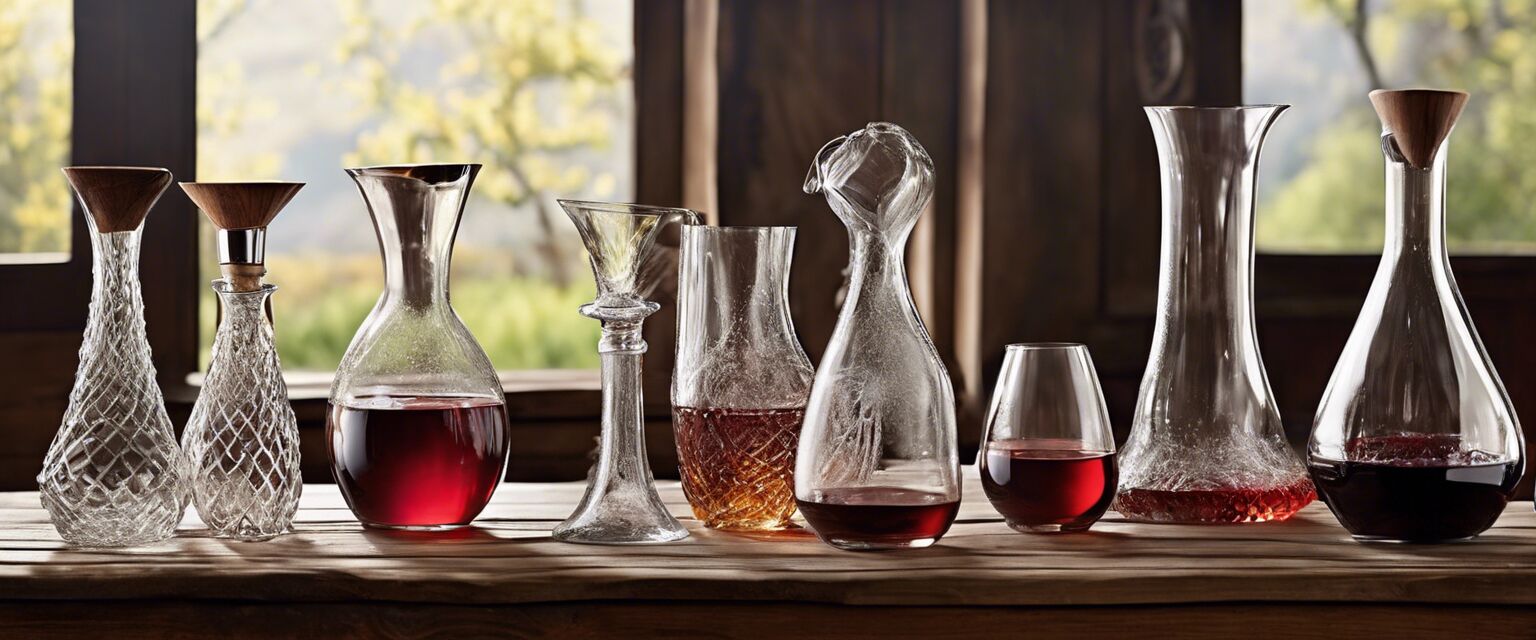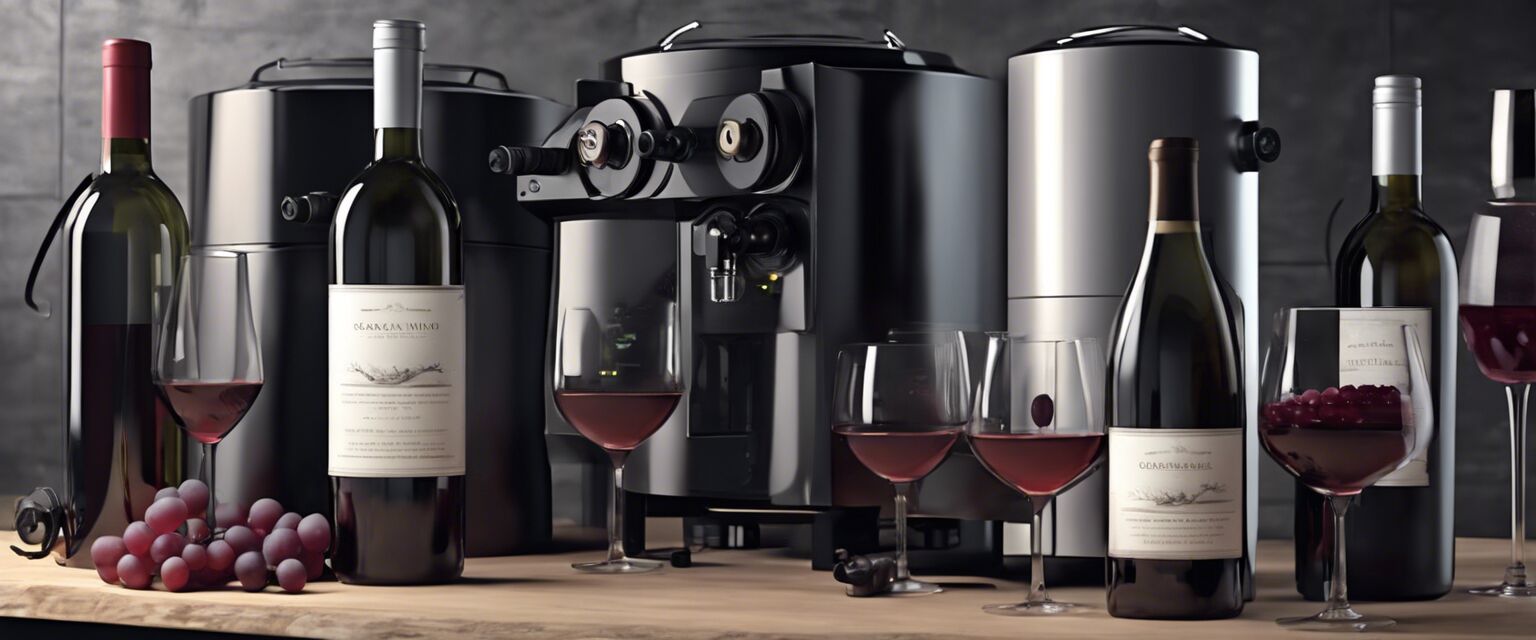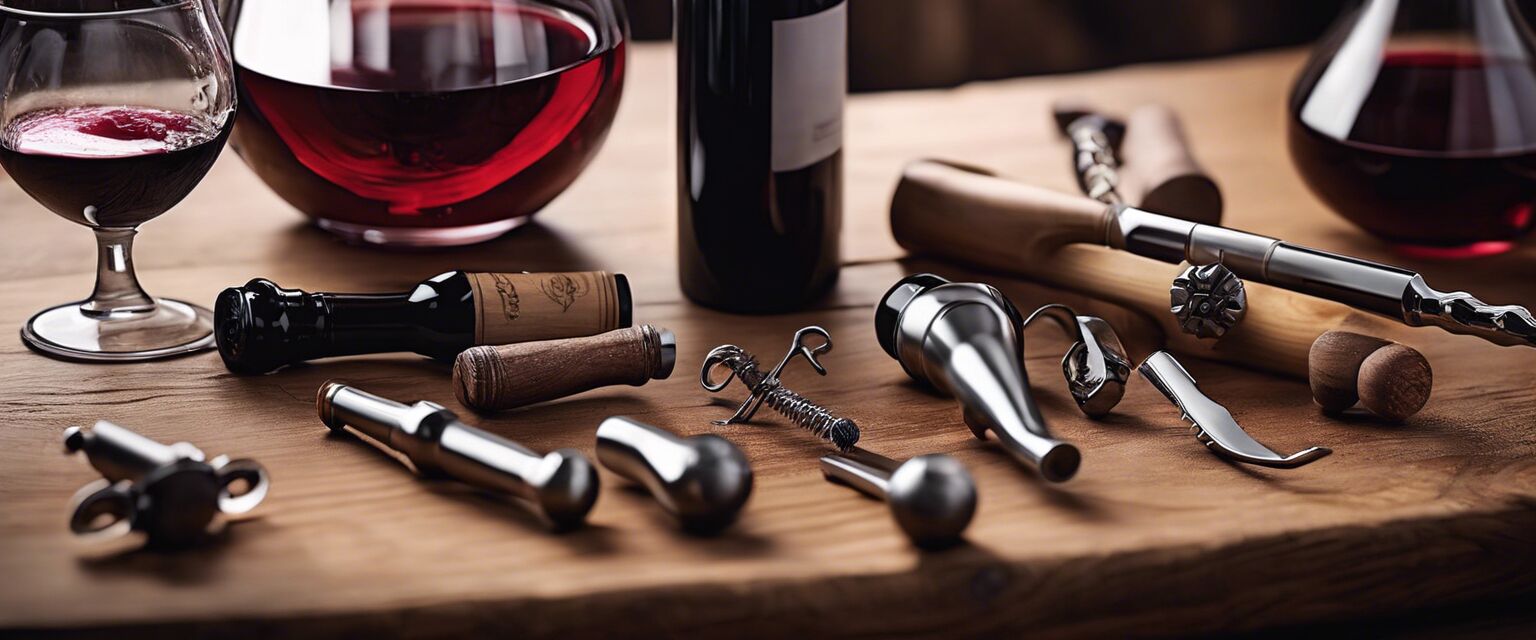
Wine Aerators
Key Takeaways
- Wine aerators enhance the wine's aroma and flavor by allowing it to interact with air.
- Different types of aerators include handheld, decanter-style, and electric options.
- The choice of aerator can depend on the type of wine and personal preference.
- Aerators are easy to use and can significantly improve your wine-drinking experience.
- For best results, aerate wines that are younger and more tannic.
Wine aerators are innovative gadgets that help to elevate the quality of your wine by enhancing its flavors and aromas. If you are an avid wine enthusiast or just beginning to explore the world of wine, understanding the benefits of using a wine aerator can greatly improve your drinking experience. In this article, we will delve into the various types of wine aerators, how they work, and their advantages.
What is a wine aerator?
A wine aerator is a device designed to introduce air into wine, allowing it to breathe. This process can soften the tannins and release the full bouquet of aromas in the wine, resulting in a more enjoyable tasting experience. Aeration can be particularly beneficial for young red wines, which often have high tannin levels and could benefit from a little time to mellow out.
How do wine aerators work?
Wine aerators work by increasing the surface area of the wine exposed to air. When wine is poured through an aerator, it is forced through small openings or channels, which introduces air into the wine. This process can also create a slight agitation, further enhancing the aeration effect.
Benefits of using a wine aerator
- Improved flavor: Aerators can enhance the wine's flavor profile, making it taste smoother and more balanced.
- Enhanced aroma: By allowing the wine to breathe, aerators help release volatile compounds that contribute to the wine's aroma.
- Time-saving: Instead of waiting for a wine to decant for hours, aerators can deliver similar results in minutes.
- Convenience: Many aerators are designed to be portable and easy to use, making them great for gatherings.
Types of wine aerators
There are several types of wine aerators available on the market, each with its own unique features. Below is a comparison table highlighting the main types:
| Type | Description | Pros | Cons |
|---|---|---|---|
| Handheld Aerators | Portable devices that fit over the glass and aerate wine as you pour. | Easy to use, portable, and quick. | May not aerate larger volumes effectively. |
| Decanter-style Aerators | Stylish vessels that allow wine to breathe in a larger volume. | Elegant presentation and effective aeration. | Requires additional cleaning and handling. |
| Electric Aerators | Battery-operated devices that aerate wine automatically. | Great for entertaining; minimal effort required. | More expensive and may require battery replacements. |
| Pour-through Aerators | Integrated aerators that attach to the bottle's neck. | Simple to use and less cleanup. | Limited aeration compared to other types. |
Choosing the right wine aerator
When selecting a wine aerator, consider the following factors:
- Type of wine: Younger, tannic red wines benefit the most from aeration.
- Occasion: Consider whether you need a portable option for gatherings or a more elegant decanter for home use.
- Budget: Aerators are available at various price points, so choose one that fits your budget.
How to use a wine aerator
Using a wine aerator is straightforward. Hereâs a simple step-by-step guide:
- Open the bottle of wine you wish to aerate.
- If using a handheld aerator, hold it over your glass.
- Pour the wine through the aerator into your glass.
- If using a decanter-style aerator, pour the wine into the decanter and let it sit for a few minutes.
- Enjoy your beautifully aerated wine!

Common misconceptions about wine aerators
Despite their popularity, there are some misconceptions regarding wine aerators:
- Aeration is only for red wines: While red wines benefit most, some white wines can also enhance with aeration.
- All aerators work the same: Different designs and features can affect how well an aerator works.
- You must decant wine for hours: Aerators can achieve similar results in a fraction of the time.
Storing wine aerators
To keep your wine aerator in good condition, follow these storage tips:
- Clean the aerator after each use to prevent residue buildup.
- Store it in a cool, dry place away from direct sunlight.
- Consider using a protective case if your aerator is delicate.

Conclusion
Wine aerators are valuable tools for any wine lover. By understanding their benefits and how to use them effectively, you can enhance your wine-drinking experience. Whether you opt for a handheld, decanter-style, or electric aerator, you're sure to find a model that suits your needs. Explore more about wine accessories and discover how they can complement your wine enjoyment.
Pros
- Enhances flavor and aroma.
- Quick and easy to use.
- Available in various styles and price ranges.
- Portable options for events.
Cons
- Some may find them unnecessary.
- Requires cleaning after use.
- Not all wines require aeration.
Tips for beginners
- Start with young red wines to see the most noticeable difference.
- Experiment with different aerator types to find what you prefer.
- Donât hesitate to ask for recommendations at your local wine shop.
- Join wine tasting events to learn more about aeration and wine pairing.







